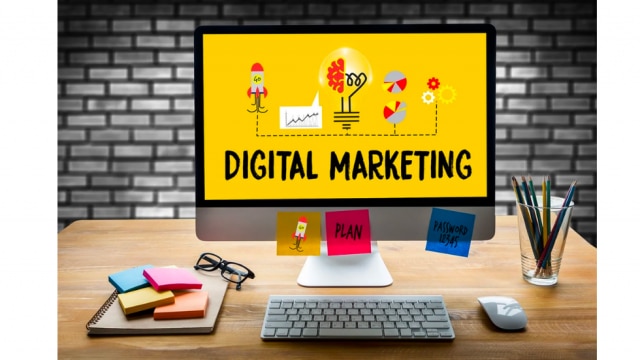
As businesses brace themselves for another year with the ongoing pandemic, there’s an increasing need to understand the current digital landscape. New marketing innovations are cropping up, and ad budgets have stooped to a new low, having dropped to 6.4% of company revenue in 2021 (from 11% in 2020), according to Gartner.
However, the good news is that CMOs are increasing their digital media spending to account for 72.2% of the total marketing budget. In this article, we will understand why there’s a fundamental shift in the way marketers are approaching digital marketing and practical recommendations brands can leverage from the evolving trends.
Top 7 digital marketing recommendations for 2022
1. Focus on driving organic search: For brands looking to benchmark their content quality with the EAT framework (Expertise, Authority, and Trust), they should continually learn about core updates that Google releases every day. This includes looking at changes being made to search engine results pages (SERPs) such as this one. Additional Google SERP features include HTTP results, Related Questions, Ads/Paid, Local, Site-Links, etc. Keeping an eye out for these updates can help brands to improve their search results with time.
2. Optimise ad tests for Google and Facebook: As per research, more than two-thirds of ad spend goes to Google and Facebook. Needless to say, marketers should focus on these two platforms when it comes to fine-tuning their advertising spending. Marketers can start by understanding the customer journeys across diverse platforms and look at ad placement options across Facebook News Feed, Instagram Stories, Reels, etc.
3. Integrate video-driven influencer marketing: The use of video-driven platforms such as TikTok, Snapchat, and Instagram Reels has skyrocketed since the pandemic. In fact, more and more users are expected to be active on social media – around 3.96 billion globally by 2022 (a 4.8% increase from 2021). Brands should study what’s trending on these platforms and create content accordingly. For instance, they should think about promoting influencer-generated content as it performs better and drives more engagement compared to branded posts, according to 60% of marketers.
4. Read about and reinforce user privacy across platforms: Consumer privacy has been a controversial topic for marketers and end-users alike. For 86% of consumers, data privacy is a big concern. With the GDPR law being launched in May 2018, there’s been an increased focus on driving greater transparency for customer data. Digital brands need to ensure that they’re always adhering to the prescribed data privacy laws by regulators, or else they risk annoying customers. As per research by McKinsey, customers trust companies that restrict the use of personal data and can respond with agility to breaches and hacks.
5. Pay special attention to all-things visual: According to data, first impressions are 94% design-related. In simpler words, brands should understand the impact good visuals and graphic design can have on their target audience. Multiple visual design trends will be dominant in 2022, such as inclusive visuals, data visualisations, bold backgrounds, colourful icons and illustrations, serif fonts, branded memes, quotes, and social screencaps. Furthermore, brands should factor in innovations in interactive design such as neomorphism, immersive 3D visuals, micro-interactions, and so on. Therefore, to make the most of their digital marketing creatives, brands should take heed of the latest graphic designing trends and incorporate the same as needed.
6. Align content strategy to customer needs and wants: According to the Content Marketing Institute, the following will be trends to watch out for in content marketing for 2022. Brands should ‘show off’ their content marketing efforts in 2022. These trends can help content marketers gain visibility and boost traffic:
Trends for video content marketing:
Other emerging trends:
7. Targeted influencer marketing and website personalisation will become the big picture:
Influencer marketing has been on the rise owing to its ability to engage audiences and build long-term customer relationships. By 2022, brands are expected to spend as much as $15 million annually on influencer marketing. Digital marketing teams should promote user-generated content, think of deploying more virtually-driven micro-influencers, focus on performance marketing, and strive to establish long-term relationships with influencers.
On the personalisation side, according to a SmarterHQ report, 72% of consumers will only engage with marketing messages that are personalised and tailored to their interests. Additionally, 80% of frequent shoppers claim that they will only shop with brands that personalise their experience. Clearly, brands should focus on creating personalised digital marketing campaigns that cater to the needs of individual customers at scale.
The writing is on the wall: If you don’t have a planned, data-driven, and user-centric approach to your digital marketing strategy, you’re already falling behind the competition. If you don’t know where to begin, take cues from the tips outlined above and, more importantly, think about hiring a digital marketing agency. It might be a good place to start.

Leave a Reply